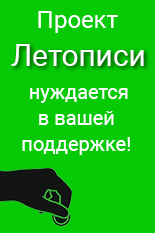Blockly
| Ages | 9, 10, 11 |
|---|---|
| FieldActivity | Empowered Learner, Knowledge Constructor, Innovative Designer, Computational Thinker |
| Purpose | Мини-язык для обучения |
| Visual_Text_Blocks | Блоки-Иконки |
| Dimension | |
| Openness | Открытый |
| Address | http://blockly.ru/ |
| Ancestors | |
| Descendants | App Inventor |
| ActiveNow | |
| Remixing? |
Blockly is a library for adding drag and drop block coding to an app. This is primarily used for computer science education, but can also give users a way to write their own scripts or configuration for an app. Blockly has libraries for Web (JavaScript), Android (Java), and iOS (Swift/Obj-C)
Blockly is a programming tool that lets students work in blocks. It can show a text language equivalent, but no work is done in text. Blockly-based App Inventor is a block language for mobile devices that includes a new text language, 1). TAIL is designed to be isomorphic to AppInventor blocks and can be converted to blocks. This approach relies on a new text language, so it does not directly generalize to other pre-existing text languages.
Introducing programming concepts to children early in their education can be beneficial because the type of problem solving that encompasses computational thinking is becoming increasingly relevant in our daily lives. A relatively new breed of programming environments has emerged to address this need. Visual programming languages (VPLs) allow programming logic to be represented with diagrams that illustrate its execution flow. Popular VPLs (e.g., Scratch, Snap!, Alice, App Inventor) exist as full-featured, stand-alone programming environments with diagrammatic representations of the program instructions. This representation removes the syntactical barrier to entry that may exist with textual languages.
Blockly, developed by Google, is a type of block language development kit that allows the rapid construction of new block-based visual programming languages to address a specific pedagogical or content focus. This poster provides a brief tutorial on the steps used to create a new Blockly environment, along with two case studies demonstrating the power of Blockly. The two environments introduced are focused on the manipulation of images via operations on pixels (Pixly), and programmatic control of a Sphero robot (Spherly). The construction and specific details of these two environments are described and illustrated with html, xml, and Javascript code examples and some of their potential applications. More information about Pixly and Spherly can be found at: http://outreach.cs.ua.edu/pixly and http://outreach.cs.ua.edu/spherly
Blockly and Scratch Blocks are used by a variety of developers, including:
